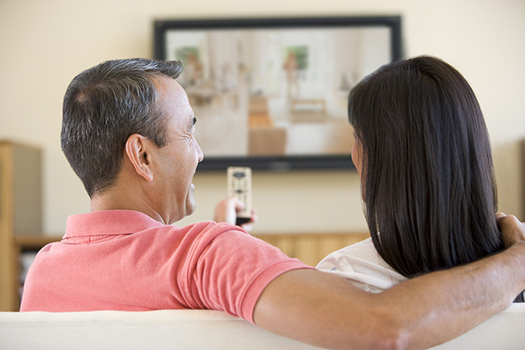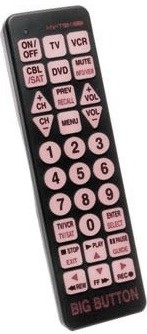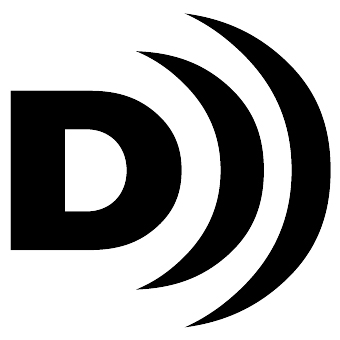Enjoying Television
One of the most common challenges people report after experiencing blindness/ low vision is watching television. They often report an inability to see the actors’ faces, printed text on the screen, or the television menus and accompanying channel guide. Television viewing has changed dramatically in recent years, and the number of ways to approach these challenges has increased exponentially. Which is a good thing, right?
Ultimately yes, but the dizzying array of new technology surrounding television viewing may make some of us dream longingly of watching the Andy Griffith show on an old black and white TV with a rabbit ears-shaped antenna! If the picture became fuzzy, at least you knew how to fix it: Slap the TV with the palm of a hand or twist around the rabbit ears. Ultimately, many of these changes are creating a positive impact on enjoying and accessing television programming for all of us.
A New Definition of Television
Before looking at some environmental factors affecting television viewing for consumers with vision loss, it’s worth considering an entirely new definition of television. Television programming is now just content that traditionally was only available on that appliance with a large screen, often situated in a common home area.
Today, television programming can be delivered to a computer, smartphone, or tablet, and the services vary widely—cable, Internet, satellite dish, antenna, etc. The TV you purchase now may also connect to the Internet and be capable of doing much more than delivering television programs. You might use it to go to a website, check your email, or play music, among many other things.
First, Some Environmental Factors to Consider
To begin, let’s address some of the environmental factors that may detract from watching TV more traditionally—sitting across the room from a screen displaying some television programming.
Glare and magnification are two low-tech factors affecting your ability to see the television screen or almost any electronic display.

Glare and Television
If your screen is in front of a window or near a bright light often on, glare may significantly reduce the contrast on the TV screen image. Move the TV away from the window, reduce the glare from the window with curtains, or consider trying a pair of indoor glare shields or absorptive lenses.
Glare shields or absorptive lenses are available in a wide variety of styles and filter colors, so to be certain of the correct style and filter color, have an assessment done by a low vision specialist or vision rehabilitation professional before purchasing these lenses.
Magnification and Television
Magnification, or making the picture on the TV screen larger, can be achieved in several different ways that don’t always require better or stronger glasses:
- Sitting Closer: It’s easy to overlook one of the easiest methods of achieving magnification—simply moving closer to the object we’re trying to see! If it’s at all possible, try moving closer to the TV screen. Always check with your eye doctor first, but in most cases, sitting closer to the television screen will not negatively affect your vision, contrary to what many of us were told as children.
- However, mounting evidence shows that the blue light from your television and computer screens can harm your vision. See the lighting and glare section. Lylas G. Mogk, M.D. also discusses the blue light hazard at Risk Factors for Age-Related Macular Degeneration (AMD).
- A Larger or High-Definition Screen: Consider a larger screen or switching to a high-definition (HD) television screen. A trip to the local electronics store will enable you to conduct your assessment. Look at a range of screens in the store to see if a particular type offers a clearer picture, and also note the distance at which you can see the screen best.
Low Vision Devices
TV Glasses
We often think of optical solutions when we think about magnification, so it is not uncommon for individuals to ask for “glasses” to help with television viewing. And the answer is Yes; there are glasses to magnify the television screen. Over the past 10 years, I’ve done numerous demonstrations and assessments with such glasses, but in most cases, people find these either ineffective or cumbersome. Ask your low vision specialist or vision rehabilitation professional if you can try a pair of “TV glasses” to determine if they will work for you.
A Monocular or Telescope
Another optical option might be a hand-held monocular or telescope. These can be held up to either eye or, in some cases, mounted to existing glasses to help you see greater detail. Monoculars come in magnification strengths greater than 2X, more than the maximum magnification available in “TV glasses.”
Remember that as the magnification strength increases, the field of view decreases. In other words, you may see greater detail in a smaller area of the TV screen with a monocular but much less of the screen than you might see through TV glasses.
Again, you will want to have an assessment done by a low-vision specialist before purchasing a monocular, telescope, or any other low-vision device to determine the best magnification and field of view for you. Also, keep in mind that unless the device is mounted to a pair of glasses, you will be holding it up to your eye again and again as needed, and this can get tiresome despite any benefit gained by looking through it.
The Television Remote
 An illuminated big
An illuminated big
button TV remote
A final environmental accommodation that comes in handy is creating greater access to the television remote. TV remotes can become difficult to use if the lighting is poor; the print is too small to see clearly; the remote has poor contrast; or the number of buttons becomes overwhelming.
While a large print remote with larger buttons and better contrast may come in handy, it is often only one or two buttons that are used regularly and are difficult to find. In this case, marking these buttons with a raised or tactile marking can be helpful:
- Touch Dots are black, white, red, yellow, and orange raised foam dots with adhesive backing to mark remotes, appliances, computers, and keyboards.
- Hi-Mark Tactile Pen is a three-dimensional orange, white, or black plastic liquid that makes raised lines, dots, and shapes to identify the settings on remotes and appliances. The raised line or dot can be seen and felt after the liquid dries.
Better Access to TV Programming
Glare, magnification, and adapting your remote may be just what some television viewers need. Still, for others, this will not make the television, programs, and menus completely accessible. A great leap forward for greater television accessibility occurred with the Twenty-First Century Communications and Video Accessibility Act, or CVAA passed in 2012.
The CVAA includes comprehensive accessibility guidelines for communications devices, such as televisions, computers, and phones. Two of the most exciting provisions for television viewing have increased accessibility for user controls and menus and a mandated quota for video-described programming.
In brief, the CVAA mandates that any devices airing broadcast or cable programming have user controls and menus used for locating programs and turning on video descriptions that are accessible by users who are blind or visually impaired. As a result, many Smart TVs (televisions that connect to the Internet and do much more than provide traditional cable and broadcast reception) are now more accessible with self-voicing menus, and cable companies such as Comcast are incorporating text-to-speech into their programming menus.
Additionally, the CVAA mandated that some of the most popular broadcast and cable networks offer 50 hours of prime time or children’s audio-described video per quarter. This is four hours each week.
What is Audio Description (AD) for Video?

Audio-described movies or programming include additional narration accompanying the film to describe the action that might otherwise need to be accessed visually.
Audio description is not just limited to videos, However. It may be implemented in live performances of all types and delivered by a radio receiver, iOS app, or some other separate device.
For programs offering it, audio description may often be turned on through the SAP (Second Audio Program) or MTS (Multichannel Television Sound) options on the television or cable menus. Learn more about audio description through the American Council of the Blind Audio Description Project.
The Present—and Future—of Television
- While television programming and the hardware used to access this programming has changed, some of the fundamentals related to watching the TV and increasing access, such as increasing magnification and reducing glare, remain the same.
- Legislation, such as the Twenty-First Century Communications and Video Accessibility Act, will also continue driving greater accessibility and increased options for television viewing.
- Perhaps the greatest changes in television viewing, including the increasing ways television programming is delivered—on smartphones, tablets, smart TVs, and through Internet streaming services—are yet to come.
- The Eyes on Success podcast interviewed Comcast Cable’s Vice President of Accessibility, Tom Wlodkowski, about Comcast’s Latest Innovations in Accessible TV. This interview is packed with information on the progress of accessibility from one of the leaders in the cable industry.
By Steven Kelley, CRC, CVRT